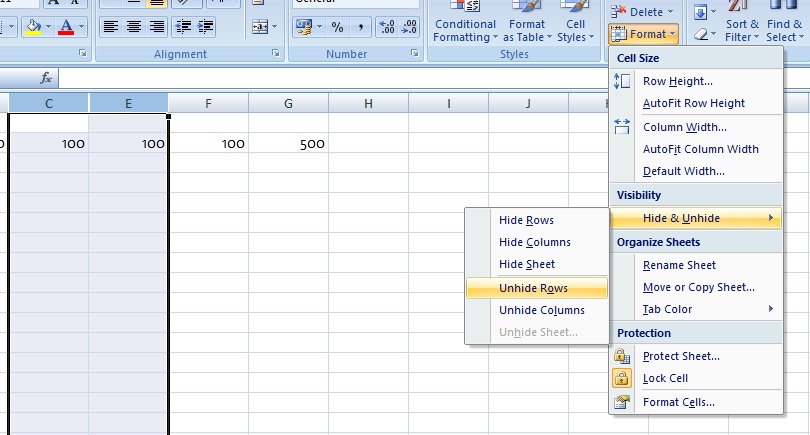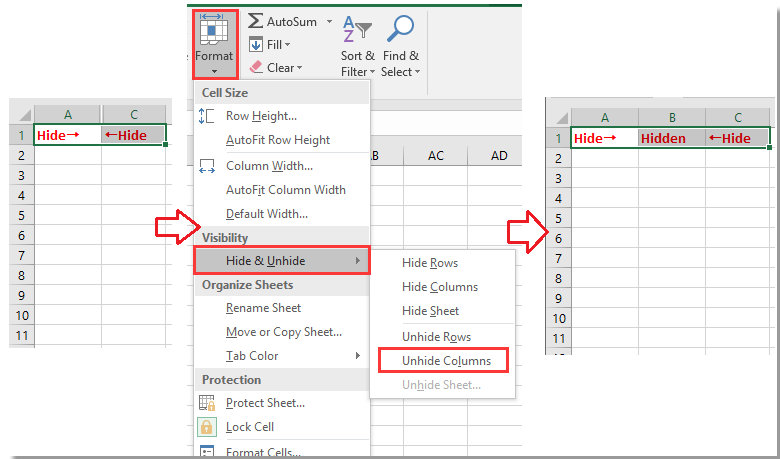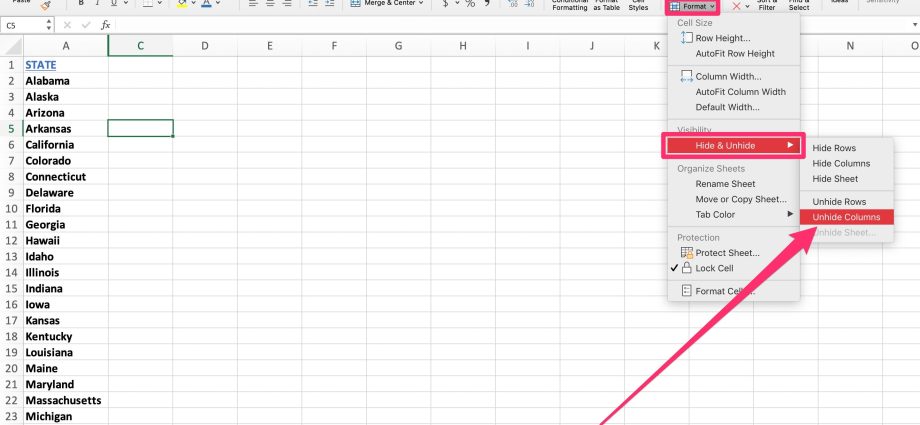How To Show Hidden Columns In Excel
How To Show Hidden Columns In Excel - Show all hidden columns in Excel via Go To Special Open your workbook and navigate to the Home tab Click on the Find Select icon and pick the Go to Special option from the menu list On the Go To Special dialog box select the Visible cells only radio button and click OK Hide columns Select one or more columns and then press Ctrl to select additional columns that aren t adjacent Right click the selected columns and then select Hide Note The double line between two columns is an indicator that you ve hidden a column Hide or unhide columns in your Microsoft Excel spreadsheet to show just the data that you need to see or print Learn more at the Excel Help Center https
Look no even more than printable design templates in case that you are looking for a easy and efficient method to improve your performance. These time-saving tools are simple and free to utilize, providing a series of advantages that can help you get more performed in less time.
How To Show Hidden Columns In Excel

Hide Columns In Excel Zoomcost
 Hide Columns In Excel Zoomcost
Hide Columns In Excel Zoomcost
How To Show Hidden Columns In Excel Printable templates can help you stay arranged. By providing a clear structure for your jobs, to-do lists, and schedules, printable templates make it simpler to keep everything in order. You'll never ever need to stress over missing due dates or forgetting crucial tasks once again. Utilizing printable design templates can assist you conserve time. By eliminating the need to produce new files from scratch whenever you require to finish a task or prepare an event, you can focus on the work itself, instead of the documentation. Plus, numerous design templates are adjustable, permitting you to personalize them to match your needs. In addition to saving time and remaining organized, using printable design templates can likewise assist you remain encouraged. Seeing your development on paper can be a powerful motivator, motivating you to keep working towards your goals even when things get hard. In general, printable templates are a terrific method to boost your performance without breaking the bank. So why not give them a try today and start achieving more in less time?
Quick Method To Unhide Columns In Excel
 Quick method to unhide columns in excel
Quick method to unhide columns in excel
Step 1 Open the Excel File Open the Excel file for which you want to unhide all columns The Excel file you are applying these to should have certain hidden columns for you to understand the steps better Try to Use these steps on Excel sheets with hidden columns Step 2 Select the Whole Sheet
If you don t see the first column column A or row row 1 in your worksheet it might be hidden Here s how to unhide it In this picture column A and row 1 are hidden To unhide column A right click the column B header or label and pick Unhide Columns To unhide row 1 right click the row 2 header or label and pick Unhide Rows
Hidden Columns In Excel 3 Ways To Show Hidden Columns In Excel Healthy Food Near Me
 Hidden columns in excel 3 ways to show hidden columns in excel healthy food near me
Hidden columns in excel 3 ways to show hidden columns in excel healthy food near me
How To Show Hidden Columns In Microsoft Excel Hide And Unhide Columns In Microsoft Excel YouTube
 How to show hidden columns in microsoft excel hide and unhide columns in microsoft excel youtube
How to show hidden columns in microsoft excel hide and unhide columns in microsoft excel youtube
Free printable templates can be an effective tool for improving productivity and attaining your objectives. By selecting the best templates, including them into your regimen, and individualizing them as required, you can simplify your everyday tasks and make the most of your time. Why not provide it a try and see how it works for you?
1 Select Entire Worksheet and Use Unhide Command You can unhide all hidden columns at once by selecting all cells and selecting the Unhide option Follow these steps to do this Steps First click on the green arrow in the left top corner of the worksheet Then you will see all cells of the worksheet have been selected
Follow these steps Select the worksheet containing the hidden rows and columns that you need to locate then access the Special feature with one of the following ways Press F5 Special Press Ctrl G Special Or on the Home tab in the Editing group click Find Select Go To Special